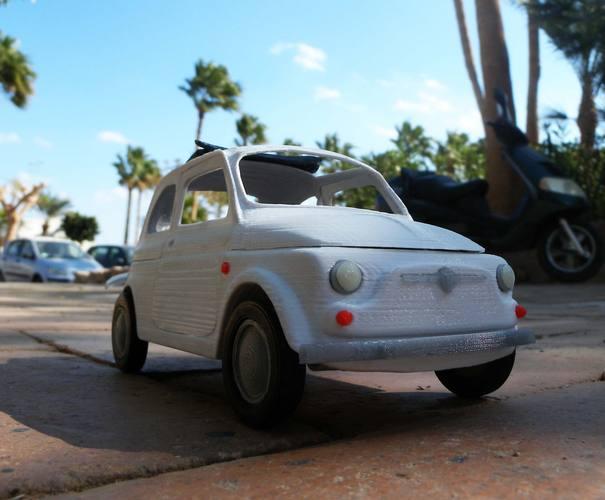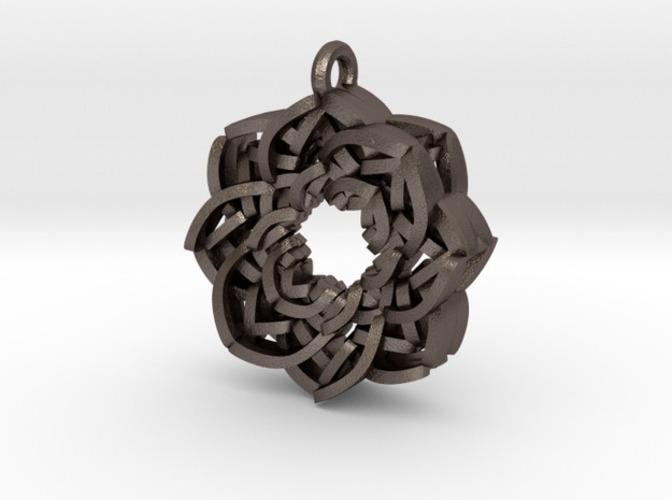Pinshape, with headquarters in Mountain View, California, is an online 3D printing marketplace and community dedicated to bringing people across the globe together to explore, learn, share ideas, sell their work, buy the work of others, download, and order 3D prints. 3D printing can be off-putting, impossibly complex seeming to the uninitiated, so web-based forums like Pinshape can provide an entree for people to engage on many levels, from novice to expert.
The Pinshape team — CEO and co-founder Lucas Matheson, COO and co-founder Nick Schwinghamer, CTO and co-founder Andre Yanes, and marketing manager Adrienne Healey — combined their various experience and skills to create Pinshape. They observed that “thanks to free tools, creative people, and the art of the search engine plus YouTube tutorial combination,” the 3D design demographic was shifting. Evidently, 3D printing has gone, if not mainstream, out of the tech geek stream and into one far more accessible to people who’ve discovered they don’t need a technical background to fully embrace 3D printing.
The Pinshape staff, curious about who they’ve attracted to their website and service, asked the question, “Who are our 3D designers?” Their extensive response comes to us in the way of a colorful graphic that’s incredibly enlightening. According to the findings of their survey, 36% of their users are hobbyists, people who want to make a bit of extra money; 44% of the 3D designers are full-timers; another 14% of the Pinshape crowd 3D design on a part-time basis; and 5% are there for the fun of it.
I was a little disappointed to learn that, at least on Pinshape (though I suspect this is a more widespread phenomenon), 81% of the 3D designers are male. Is this a wake-up call for the 3D printing industry? I hope so! At the least, there’s an entire unexplored market there. I’d like to see the industry start with schools and work from there to engage girls and women in this new technical revolution.
Also, notably but probably not surprisingly, the largest group of users among Pinshape 3D designers — 60% — is comprised of 23-to-34-year-olds. 17% are 35 to 40, and 12% are 41 to 51. On either end of the age spectrum are the 8% of 3D designers who range from 17 to 22 and the older crowd who are between 52 and 60. We imagine that these numbers will change as the technology becomes even more mainstream and is integrated into school curricula more extensively.
Where in the world do all of these 3D designers live? Impressively, Pinshape is reaching a pretty diverse crowd. The top eight countries from which their users hail are the United States (35%), India (13%), the Netherlands (7%), Spain (6%), Italy (5%), Chile (5%), Sweden (3%), and Romania (3%). I wonder how Pinshape’s numbers match up with those of other online 3D design and printing communities.
The backgrounds of Pinshape’s 3D designers are also fairly diverse, although none seem to come from strictly non-tech educational experiences or arts educations that don’t involve digital technology training. The team at Pinshape learned that 62% of its 3D designers were actually self-taught while the other 38% were graduates of some kind of 3D program. All users’ backgrounds were broken down into the following categories: 60% had previous training in 3D modeling; 40% already knew how to sculpt in 3D; 26% come from gaming backgrounds; 26% were industrial designers; 22% were engineers; and toy designers comprised 13% of the overall users. A full 62% of Pinshape’s 3D designers had less than two years’ experience — which really isn’t a surprise as the technology is relatively new.
I loved learning which design tools the Pinshape crowd favored. Coming in neck-and-neck at the top were 3D Max (17%), Maya (16%), and ZBrush (14%). Rhino and SolidWorks were tied at 12%, then came Blender (9%), Netfabb (5%), and then with 3% each, Meshlab, Modo, and Sketchup. A whopping 78% of the 3D design crowd, at least in Pinshape’s community, are Windows users whereas only 22% are Mac OS devotees. One statistic that surprised me was that 51% of the 3D designers use tablets.
Possibly most astonishing of all were the numbers related to the printing of 3D designs. Evidently, 18% of the Pinshape users “don’t plan on buying a 3D print anytime soon.” Only 32% ever print their designs. Evidently, they’re content to design or maybe printing their designs is beyond their budgets. Those who do follow through with 3D printing use sites like Pinshape, Shapeways, Sculpteo, 3D Hubs, and Materialize, so it looks like the web-based 3D printing sites still have their work cut out for them. When 3D designers do their own printing, the survey learned that the home 3D printers they prefer are the Form 1, the MakerBot Replicator 2, the Ultimaker, the Leapfrog Creatr, and the MakerBot Replicator 1.
When Pinshape asked their users to speculate about the future of consumer 3D printing, they made a few forecasts. The top 3D printed objects, projected the Pinshape community, will be toys (47%). Next come tools and gadgets at 23%, followed by clothing (15%), food (7%), various parts (5%), and jewelry (3%). As for materials, Pinshape 3D designers are most enthused at the prospect of printing with plastics (44%), ceramics (35%), non-precious metals (33%), carbon (22%), and precious metals (22%). They also look forward to creating 3D designs that can be printed using wax (19%) and conductive materials (19%).
These final numbers reflect the exciting extent to which the technology is expanding to allow more mainstream production to embrace variety and to really push the limits of what’s possible outside of the industrial paradigm. Thanks to the folks at Pinshape for enlightening us and for nurturing development of this incredibly versatile technology!
Let us know what you think about these results in the Who is 3D Printing? forum thread over at 3DPB.com.
The full infograph can be found below:

Subscribe to Our Email Newsletter
Stay up-to-date on all the latest news from the 3D printing industry and receive information and offers from third party vendors.
You May Also Like
Profiling a Construction 3D Printing Pioneer: US Army Corps of Engineers’ Megan Kreiger
The world of construction 3D printing is still so new that the true experts can probably be counted on two hands. Among them is Megan Kreiger, Portfolio Manager of Additive...
US Army Corps of Engineers Taps Lincoln Electric & Eaton for Largest 3D Printed US Civil Works Part
The Soo Locks sit on the US-Canadian border, enabling maritime travel between Lake Superior and Lake Huron, from which ships can reach the rest of the Great Lakes. Crafts carrying...
Construction 3D Printing CEO Reflects on Being Female in Construction
Natalie Wadley, CEO of ChangeMaker3D, could hear the words of her daughter sitting next to her resounding in her head. “Mum, MUM, you’ve won!” Wadley had just won the prestigious...
1Print to Commercialize 3D Printed Coastal Resilience Solutions
1Print, a company that specializes in deploying additive construction (AC) for infrastructure projects, has entered an agreement with the University of Miami (UM) to accelerate commercialization of the SEAHIVE shoreline...

































